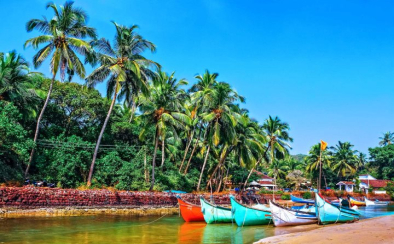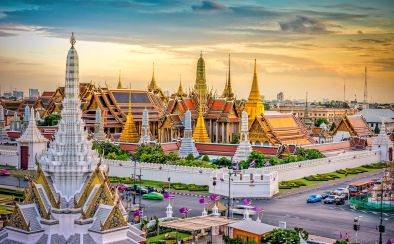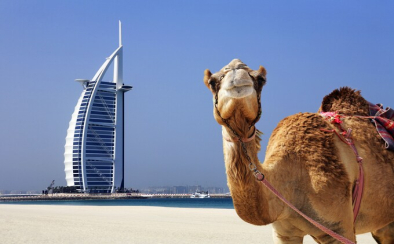
Posted by: Sahil
Known for its gorgeous beaches and hippie vibe, this tiny state in western India also offers a fascinating blend of Indian and Portuguese influences that are reflected in its buildings, cuisine and art.
Think of it as India’s happy place: The state of Goa, which occupies a sliver on the country’s western coast, is where residents of Mumbai, Delhi, Bangalore and other cities converge for long weekends and lazy holidays filled with sun, sand and revelry. These days, the beguiling beaches might look like they’ve been colonized by foreign hippies and rave-goers by the thousands, but the region’s European connection dates back centuries. The Portuguese defeated the Adil Shahi dynasty of Bijapur in 1510, beginning a four-and-a-half-century reign — Goa only became part of India in 1961, 14 years after the rest of the country won its independence from Britain. The result of this commingling of cultures is one of the most fascinating pockets of India, defined by a leisurely pace and laid-back attitude. Perhaps there’s no better way to describe the vibe in Goa than “susegaad,” a Konkani term derived from Portuguese that alludes to a sybaritic, contented way of life — or, as the travel show host and Goa resident Mayur Sharma told me, the feeling that you can “sink into life here.”
Hire a car and driver and get your historical bearings in Goa Velha (Old Goa), the original walled Portuguese city once hailed as the Rome of the East. Goan Catholics make up about a third of the state’s population today, and their influence is palpable in every corner. You can see where it all began in Old Goa, at places like the 17th-century Basilica of Bom Jesus; the Se Cathedral, the largest Roman Catholic church built by the Portuguese in Asia, with its distinctive single belfry (the other one was struck down by lightning in 1776 and never rebuilt); and the Church of the Lady of the Mount, which has expansive views over the Mandovi River.
When plague decimated Old Goa in the 19th century, the capital was moved a few miles west to Noa Goa, or New Goa, now known as Panaji or Panjim, the capital. There, you’ll find the whitewashed Immaculate Conception Church, originally built in 1600, with zigzag steps modeled after Bom Jesus do Monte in Braga, Portugal. Stroll through Fontainhas, the colorful Latin Quarter, where you’ll find old villas splashed in shades of marigold, turquoise and emerald, and fountains and handmade Portuguese tiles aplenty. Instagram was made for neighborhoods like this.
Sacha Mendes was a fashion editor at the Indian editions of Elle and GQ in Mumbai before she returned home to Goa, where she opened Sacha’s Shop in Panaji. “When you come from a place like Goa that’s so pure, you wonder what’s outside; then you go out and you feel nostalgic,” she said of what inspired her homecoming. Now, in the elegant 1938 mansion in the heart of Panjim where she grew up — the rooms were lovingly decorated by her grandfather with tiles and antiques imported from Macao and other Portuguese colonies — she brings the “outside” to Goa. Browse resortwear from Indian labels like Savio Jon, Naushad Ali, and 11.11; mirror-work bags and accessories; and apricot kernel oils and scrubs from the skin care brand Pahadi Local.
Kokni Kanteen might not look like much from the outside, but this restaurant, modeled after Portuguese-era khanavats, or taverns, is warm and inviting inside: Old photos, spice racks and clusters of chiles, garlic and onions are hung on the walls. Order the fish thali, a seemingly never-ending platter of seafood favorites like kingfish, mackerel curry, tisryo (clams), prawns and more — if that’s not enough, add a coriander-heavy chicken cafreal or mutton xacuti to the mix. Don’t miss the cumin-dusted fries, either. Dinner for two is around 1,500 rupees or about $21.


